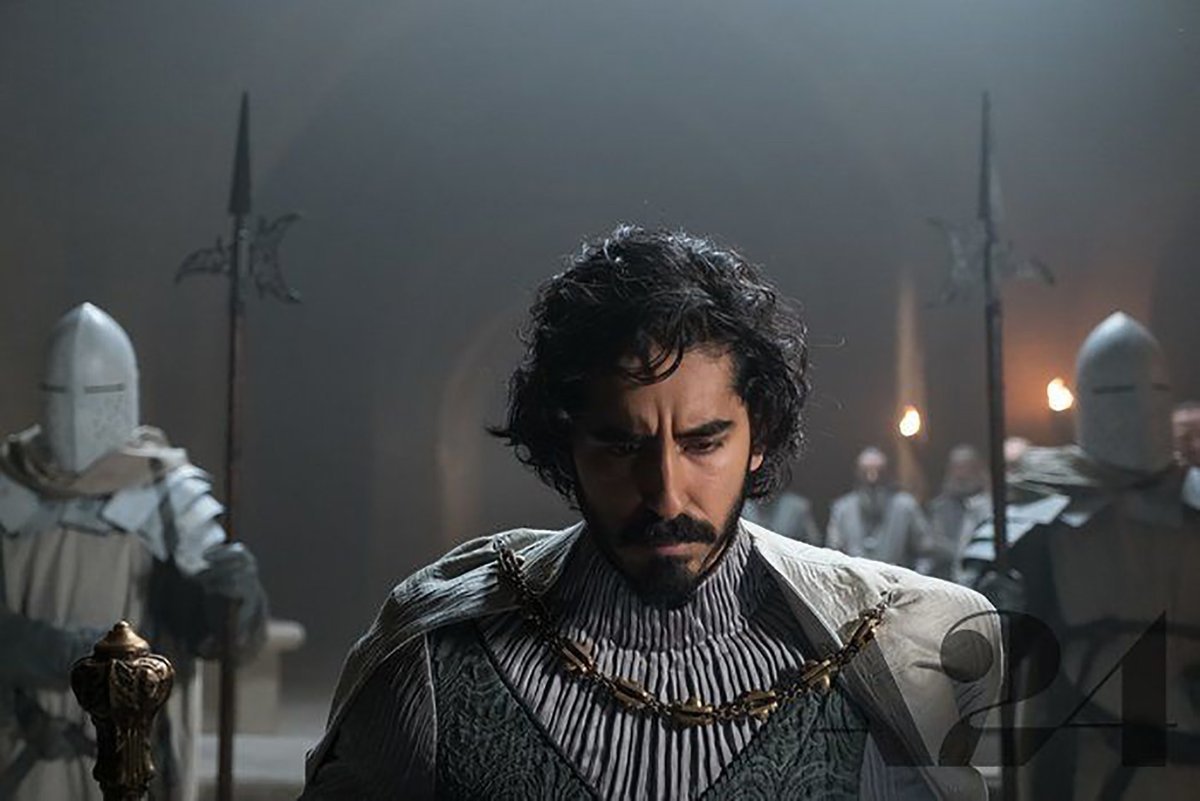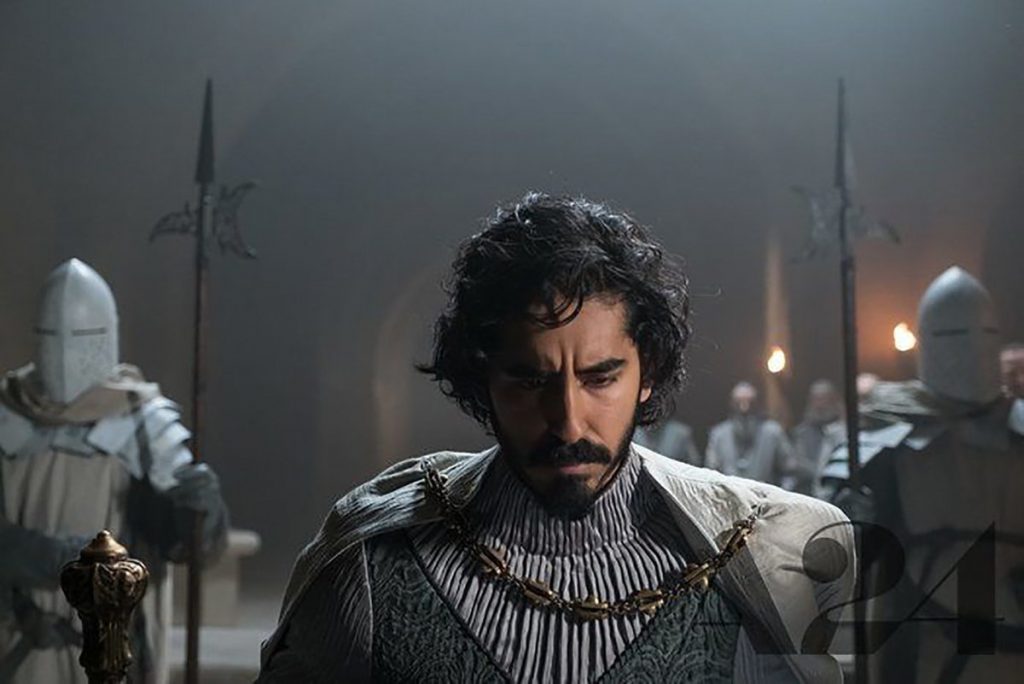

One of those movies that is significantly less enjoyable to watch than to mull over afterwards, The Green Knight is not at all the High Middle Ages action flick the marketing almost suggests, but very much a high budget period art piece. With creeping pacing and visual sequences that tip over into the obscene, the film will definitely leave viewers with images to ponder–for good and ill.
An adaptation of a medieval poem once translated from the Middle English by J.R.R. Tolkien, the story follows the quest of a knight from King Arthur’s table, Sir Gawain (Dev Patel), after his acceptance of a strange challenge from the visiting “Green Knight.” When this visitor offers to receive any violent blow from a challenger, on the condition that its deliverer receive the same blow in return exactly one year later, Gawain impetuously steps forward and severs the Green Knight’s head with an ax.
Naturally presuming this to be the end of the episode, Gawain and the others around the table are aghast when the uncanny visitor bends down, collects his head, and departs, but not before reminding all assembled of the terms of the arrangement. Gawain henceforth considers himself honorbound to seek out his preternatural opponent at the appointed date, for what can only be his untimely death.
The episodic romance then treks through Gawain’s various encounters en route to this date with doom, involving encounters with talking animals, a headless saint, and other fantastical creatures.
Do not be deceived–although it shares many elements with other tales of light hearted knights in shining armor, the emphasis in this cinematic adaptation is definitely on the darker side of the so-called Dark Ages. Toothaches, witchcraft, and a pervasive sense of inescapable damp in unheated interior spaces all cast their atmospheric spell over this vividly depicted half-wild world.
(By the bye, a better name for the era is probably “Christendom”, or, perhaps better still, following the lead of one of my university professors who includes the same era’s rise of Islam, “the Age of Monotheism”).
I will go ahead and jump straight to another warning: this film is rated R and includes at least one obscene image I would prefer to have never seen (so do enlist the services of a more detailed content advisory before deciding whether to watch). I review it here anyway, not only because many readers will no doubt be drawn to the Catholicky elements of the medieval setting, but also because, for me at least, on the whole the film’s visual interest and profundity of insight outweigh its unseemlier attributes.
Visually, the film presents a striking and distinctive style, intriguing for being so enshrouded in shadow that some moments are almost imperceptible. This is presumably the consequence, at a technical level, of the unusual decision to rely heavily upon the vagaries of natural light.
Also, thematically, the film deals suggestively with humanity’s relations with nature, pride and power, as well as the connections between these and a distinctively Christian notion of hope for bodily life after death.
For example, (major spoilers from this point), when Gawain finally reaches his climactic encounter with the dying and rising, tree-like Green Knight, he recoils from fulfilling the duty imposed by his vow and fearfully runs away from the agreed-on death blow. In rapid montage, then we watch as he plays out the remainder of his earthly life, wrestling for power, begetting progeny, fighting and killing and ultimately succumbing to the promised conclusion of those who live by the sword.
This is a summary, it would seem, of the sad, seedy sort of scramble for pleasure and privilege that life becomes when this-worldly existence is in no way informed by hope of life beyond it.
Abruptly, then, the film switches gears as we discover that this entire sequence, from Gawain’s cowardly retreat onward, is merely the flash of insight into what his life would be like if he did flee his obligation to the Green Knight. Resolving, in that moment, that such an existence would be worse than premature death, Gawain stands his ground and braces for the chop.
The ax pauses in midair, and while the Green Knight’s final line of dialogue is ambiguous, I think a valid interpretation is that the intended climax is Gawain’s epiphanic discoveries that a noble life requires loving something more than life, and that a Christian king, in order to reign like Christ, must have the faith to die like him.
It is a stirring insight, powerfully conveyed, and one that would seem to sprout in this film (despite a few zeitgeisty modern interpolations) straight from the rich, existential soil of the Age of Monotheism. This, for me, warrants another watch, even if next time I will almost certainly shield my eyes a few times and play the whole at 2x speed.
